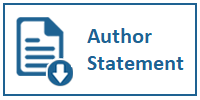Gatekeeping Process on Kompas TV Digital Team
Abstract
Reuters data telvision audience in United Kingdom and United States has decreased by three to four percent each year since 2012. This decline coincides with the data issued by Indonesian Internet Service User Association (APJII) that shows the increasing umber of internet users from 88 millions in 2014 to 132 millions in 2016. More than a quarter of them accessed internet to get information update.
The rise of digital news has fundamentally shifted the way people consume news as well as the way news is produced. As a consequence, we need to find new perspectives in producing news (Pearson and Kosicki, 2016).
This research, using the case study methods, aims to see the gatekeeping process carried out by Kompas TV digital team. The result is expected to be initial reference on how the old gatekeeping process is implemented by the digital editorial team. Data was gathered by intervieweing three members of Kompas TV digital team and observation to four digital platforms of Kompas TV: Youtube, Facebook, Instagram and Twitter.
The result shows that the content screening process on Kompas TV digital platform is highly affected by Kompas TV editorial team because most of the contents are taken from Kompas TV programs. The programs from the editorial were treated according to the characteristic of the existing digital platform, such as shortening the video for Instagram. The other consideration to adjust the program is the characteristic of the audience who prefer shorter video.
Keywords: digital, gatekeeping, Kompas TV
Downloads

This work is licensed under a Creative Commons Attribution-ShareAlike 4.0 International License.
Ultimacomm Jurnal Ilmu Komunikasi allows readers to read, download, copy, distribute, print, search, or link to its articles' full texts and allows readers to use them for any other lawful purpose. The journal allows the author(s) to hold the copyright without restrictions. Finally, the journal allows the author(s) to retain publishing rights without restrictions
1. Authors are allowed to archive their submitted article in an open access repository
2. Authors are allowed to archive the final published article in an open access repository with an acknowledgment of its initial publication in this journal















